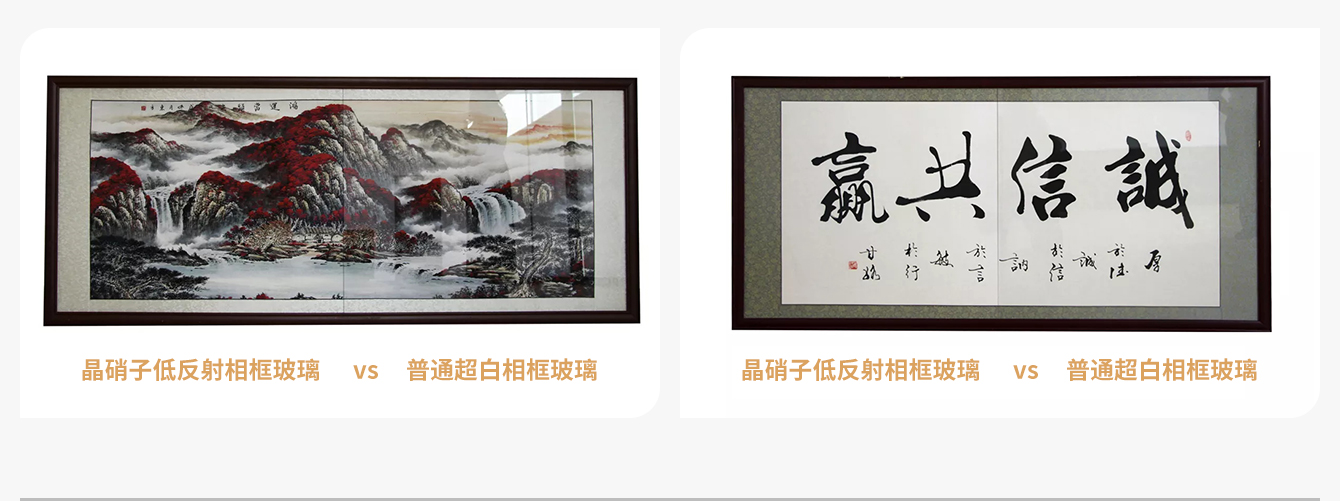The principle that low-reflection picture frame glass can reduce reflections and light interference is mainly achieved through its internal structure and surface treatment.

Firstly, the low-reflection picture frame glass effectively reduces the reflection of the glass itself by coating a reflection-reducing film on the surface of ordinary reinforced glass. This anti-reflection film is made by magnetron sputtering coating technology, which has high transmittance and anti-reflection performance. It can adjust its reflectivity and transmittance by changing the thickness and components of the film layer, to achieve the effect of reducing reflection and light interference.
Secondly, the surface treatment of low-reflection photo frame glass is also an important means to reduce reflection and light interference. During the production process, the glass is strengthened to provide a harder surface that is less likely to be scratched or broken. The fabrication process also provides better flatness and finish, which reduces scattering and colour differences on the glass surface, further reducing reflectivity. In addition, the Low Reflection Photo Frame Glass is also coated with a special coating that creates a layer of tiny concave and convex structures on the surface, dispersing the light into multiple directions, thus reducing reflections and light interference.
In addition to this, the UV, moisture and dirt resistance of Reflection Photo Frame Glass can also reduce light interference. It can effectively protect display items from UV rays and prevent colour fading or deterioration due to long exposure. At the same time, it has a higher transmittance rate, which can make the colours through the glass more vivid, making the originally dim display items clearer and more realistic.
In summary, low-reflection picture frame glass achieves the effect of reducing reflection and light interference through a collection of reflection-reducing film technology, strengthening treatment, surface treatment and other functional systems. This glass material is widely used in fields such as artwork protection and photography protection and has become one of the important choices for display and protection materials.





